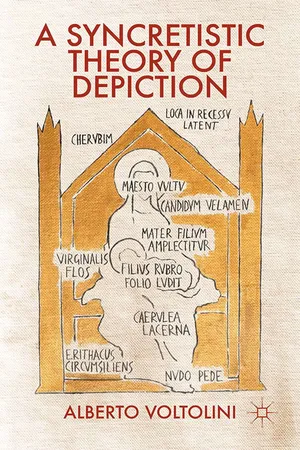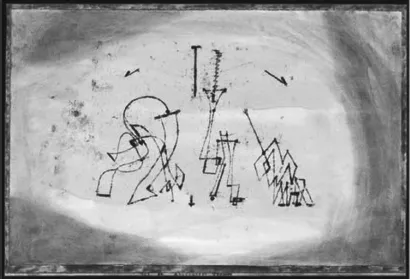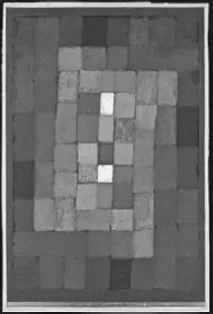
This is a test
- English
- ePUB (mobile friendly)
- Available on iOS & Android
eBook - ePub
A Syncretistic Theory of Depiction
Book details
Book preview
Table of contents
Citations
About This Book
What is depiction? A new answer is given to this venerable question by providing a syncretistic theory of depiction that tries to combine the merits of the previous theories on the matter while dropping their defects. Thus, not only perceptual, but also both conventional and causal factors contribute in making something a picture of something else.
Frequently asked questions
At the moment all of our mobile-responsive ePub books are available to download via the app. Most of our PDFs are also available to download and we're working on making the final remaining ones downloadable now. Learn more here.
Both plans give you full access to the library and all of Perlego’s features. The only differences are the price and subscription period: With the annual plan you’ll save around 30% compared to 12 months on the monthly plan.
We are an online textbook subscription service, where you can get access to an entire online library for less than the price of a single book per month. With over 1 million books across 1000+ topics, we’ve got you covered! Learn more here.
Look out for the read-aloud symbol on your next book to see if you can listen to it. The read-aloud tool reads text aloud for you, highlighting the text as it is being read. You can pause it, speed it up and slow it down. Learn more here.
Yes, you can access A Syncretistic Theory of Depiction by A. Voltolini in PDF and/or ePUB format, as well as other popular books in Philosophy & Aesthetics in Philosophy. We have over one million books available in our catalogue for you to explore.
Information
Topic
PhilosophySubtopic
Aesthetics in PhilosophyPart I
What Is Alive and What Is Dead in Previous Theories of Depiction
1
Depictions aka Pictures, i.e., Pictorial Representations
1.1 Depictions or pictures
This book mainly deals with depictions or pictures, i.e. the figurative images which result from the combination of a typically material object, the picture’s vehicle, with what provides a picture with its representational content, the picture’s subject. In claiming that the vehicle is typically a material object, I not only welcome the possibility that the vehicle is an optical effect generated via light refraction, as in the case of stereoscopes whose lenses generate a single image out of two physically separate images that respectively depict left-eye and right-eye views of the same scene, but I also want to allow for cases in which the vehicle is the outcome of hitting a certain reflecting surface with light rays, as in the case of mirrors, or of spotting a certain area with some light, as in the case of holograms. By the ‘picture’s subject’ I mean the picture’s representational content, which comes in two varieties: (i) either a singular content yielding what that picture is a picture of, a particular subject – what makes a picture the picture of a given individual, as in the case of portraits or snapshots;1 or (ii) a general content providing the picture with a generic subject – what makes a picture the picture of some F or other, as with genre pictures or stick figures.
Put this way, pictures are just a subset of images as a whole. As to images in general, some people think that there is a theoretical reason as to why pictures are such a subset.2 Yet some other people tend to think that, as regards a picture, sharing the characteristic of being an image with other things is for a picture an empty commonality.3 Although I am sympathetic with this latter group of people,4 I do not wish to expand my analysis on this concern any further. For the time being I simply wish to remark that qua figurative images, pictures are immediately to be contrasted with non-figurative images, those images that have no figurative value insofar as no further item, let alone a scene, can be discerned in them. At first, one might be tempted to classify under non-figurative images all the so-called abstract images, a label that generically includes paintings as diverse as, for instance, Paul Klee’s Abstract Trio, a composition of three human-like silhouettes, and his dissimilar Static-Dynamic Gradation, a mere array of differently colored parallelepipeds. (See Figures 1.1 and 1.2 below.)

Figure 1.1 Paul Klee, Abstract Trio (1923; The Metropolitan Museum of Art, New York: The Berggruen Klee Collection, 1984)
Yet this temptation would be incorrect. For some so-called abstract paintings are eo ipso figurative insofar as some items can be discerned in them, or at least in parts of them (this may well be the case with the first, but not with the second, Klee painting). As Richard Wollheim has claimed, in some (if not most) abstract paintings we can at least trace figure/ground relationships between items effectively located in a space that is not our actual space, the space where we locate the picture’s vehicle: an apparent or pictorial space, as he sometimes calls it.5 Accordingly, these paintings somehow present a scene where particular items interact, as standard figurative images paradigmatically do. As a result, figurative images merely contrast with truly abstract paintings, which are the only genuine non-figurative images insofar as no item can be discerned in them.

Figure 1.2 Paul Klee, Static-Dynamic Gradation (1923; The Metropolitan Museum of Art, New York: The Berggruen Klee Collection, 1987)
Within the category of figurative images, I will focus on those that are also representations, insofar as their having a subject allows them to be about individuals or to have a given content, whether singular or general, that makes them assessable with respect to their correctness – they present faithful or unfaithful portrayals of the world. Now, insofar as figurative images are also representations, their being figurative makes them representations of a particular kind – that is, pictorial representations, as people often say. Unlike for example verbal signs, which are representations as well, pictorial representations represent things in a specific way, precisely in a way that makes them figurative images. Therefore, pictorial representations are figurative images that represent, or, to put it otherwise, they are representations in a pictorial, that is figurative, way. This is why it is appropriate that they be designated by the term ‘picture’, or analogously, that they be called ‘depictions’, to use the standard expression: depictions are representations that represent something in a pictorial way, or that are also figurative images.
Once one approaches the question of depiction this way, it becomes immediately manifest that there are two necessary and jointly sufficient conditions in order for something to be a depiction. Roughly, a given entity is a depiction if and only if (i) it is the representation of something, its subject (it is about something or it has a certain content, whether singular or general) and (ii) it has a certain figurative value (it enables one to discern something in it).
From this rough definition it can be clearly deduced not only that being a representation is not sufficient for something to be a depiction – verbal signs represent, yet they do not depict at all – but also, and perhaps more interestingly, that there may well be figurative images that are not depictions. To be sure, they share with depictions what makes the latter possess a figurative value: one is able to discern something in them. Yet since they represent nothing they are not figurative images at all. In other words, non-representational entities may well have a figurative value.6
So-called ‘natural’, or better yet, accidental images are prototypical examples of this latter situation. While observing the uneven surface of the planet Mars, we might get the impression that we are seeing a human face in some of its rocks.7 Thus, one such rock surely has a figurative impact on us. Yet it is not a picture of a face. (It is not coincidental that, in order to justify a contrary claim, one would have to postulate such a rock to have been modelled by Martians or at least to have undergone a certain causal influence by human faces.) The same predicament holds true with cracks in marble that are shaped like the faces of bearded kings or walls shaped like battle scenes, as Leon Battista Alberti and Leonardo da Vinci (among others) famously reminded us.8 Although cracks and walls are definitely not pictures of humans or battles respectively, humans and battles do respectively determine their figurative value, insofar as these things can be discerned in them.
Yet this rough definition still fails to tell us how the idea that depictions represent things in a pictorial way, that is figuratively, can be spelled out. As we will see, to provide a thorough analysis of this definition is one of the main aims of this book: throughout the course of it, an increasingly refined analysis of the definition will be provided. For the time being, I simply say that there are at least two general ways of providing a precisification of such a definition. According to a minimalist reading, the definition must be taken literally, as providing two utterly explanatorily independent conditions. As a result, when investigating depictions qua representations of a particular kind, the pictorial kind, one may well already assume what representations are in general in order to simply focus on what distinguishes depictions from other kinds of representations, that is, in order to merely understand the pictorial way of representing. Alternatively, according to a maximalist reading, understanding what depictions are also involves understanding in what sense they represent something, so that no prior analysis of representation can be presupposed.9
The approach I will pursue here would appear to be minimalist. For, by wondering what it means for a depiction to be a representation that represents something in a pictorial way, I already presuppose the standard understanding of what it means for something to be a representation. In other words, first of all, as with any other representation, the fact that depictions have a subject makes them entities endowed with intentionality, in the standard sense that they either are about something or have a kind of content that makes them assessable as to their correctness. Indeed, as we have already seen, for a depiction to have a subject amounts either to be about something, or to represent either that that very something has a certain property or that there is some F or other.10 With regard to depictions the two aforementioned cases in which the notion of intentionality articulates itself,11 that is having aboutness (intentionality of reference) and having a given content that is assessable for its accuracy (intentionality of content) are qualified according to how they are typically understood in the literature on representations.12 Let me expand on this.
On the one hand, intentionality of reference is qualified by (a) the possible non-existence and (b) the possible aspectuality of what the representation is about, that is what is standardly called its intentional object. According to (a), there may well be both representations of intentional objects that exist and representations of intentional objects that do not exist. According to (b), such intentional objects may well turn out to be aspects of something else, so that one may recognize that a certain intentional object and another intentional object are just two aspects of one and the same thing.13 In this context, I use the expression ‘intentional object’ in an ontologically neutral sense. An intentional object is simply the target of a representation. Any given representation is about something, independently of whether, in the overall domain of what there is, there really is something that representation is about. To be sure, a certain intentional object will decidedly be in our ontology provided we are committed to the kind of entities to which that object belongs; but not otherwise. So for instance, if I am representing Silvio Berlusconi, who is a person, and we accept persons in our ontology, then Berlusconi will be an intentional object that decidedly figures in the overall domain of what there is. Yet if I am representing Berlusconi’s super-ego, which is a gaseous psychic entity (by ‘gaseous psychic entity’ I mean an entity that is postulated in a psychological theory only in order for the theory to accommodate psychological data), and we do not accept gaseous psychic entities in our ontology, then that super-ego will be an intentional object that does not figure in the overall domain of what there is.14 Now, qua representations, depictions are affected by both (a) and (b). First of all, in addition to having pictures of Loch Ness, which certainly exists, one may also have paintings of Nessie, the non-existent Loch Ness monster. Moreover, one may also have pictures of Phosphorus, the famous morning star, and pictures of Hesperus, the famous evening star, which are nothing but the planet Venus itself.
Intentionality of content, on the other hand, is qualified not only by (a) and (b) but also in terms of (c) the possible incorrectness of such a content, that is the fact that there may well be representations with content that are correct representations of the world as well as representations that do not represent the world correctly.15 Again, qua representations, figurative images are affected by (c) as well. Not only are there true pictures of Silvio Berlusconi using the sign of the horns gesture at an EU meeting, but there are also paintings representing him incorrectly, for example caricatures showing him as being shorter than he actually is.
Yet my apparently minimalist approach does not deny that the particular way in which a depiction represents (the figurative way) has an impact on its representational power. For, as I will stress in Chapter 6 (as well as in this chapter), I uphold, along with many others, that the figurativity of a picture puts some constraints on the subject that picture may have, hence on its content. I will first defend the idea that what gives a figurative image its figurative value provides that picture with a figurative content. In the following chapters we will see what a figurative content effectively is; intuitively speaking, it amounts to whatever can be discerned in a picture. Certainly, this figurative content is not the content of a picture that I have been speaking of all along when referring to the picture’s subject, namely, the representational content of that picture. For it is unquestionably broader than the latter: what a picture is about or what makes it assessable for accuracy is not whatever can be discerned in it. Nevertheless, as I will also claim, the representational content of a picture is just a selection (we will see later in what form) of its figurative content. Put differently, the subject of a picture is just one of all the candidates that, given its figurative content, that picture may have as its subject. Its figurative content forces that picture to have one of those candidates as its subject, hence to have a representational content that is possible for it. The subject the picture really has, hence its real representational content, is what results from a selection on this concern. From now on, I will call the representational content of a picture, insofar as it is constrained by its figurative content, the picture’s pictorial content.
To be sure, nothing precludes an entity with a certain figurative content from being treated as having a subject that i...
Table of contents
- Cover
- Title
- Part I What Is Alive and What Is Dead in Previous Theories of Depiction
- Part II The Syncretistic Theory
- Notes
- Bibliography
- Index